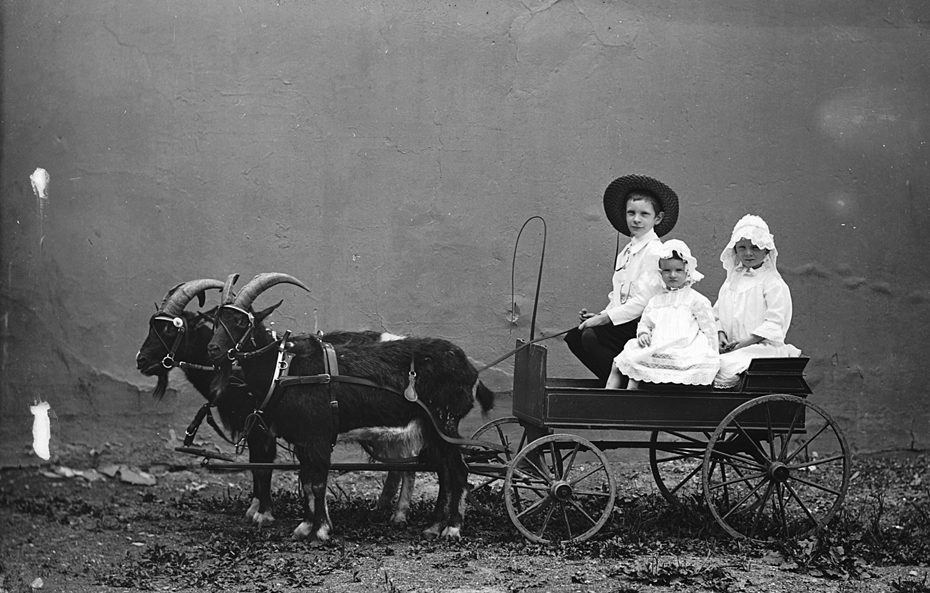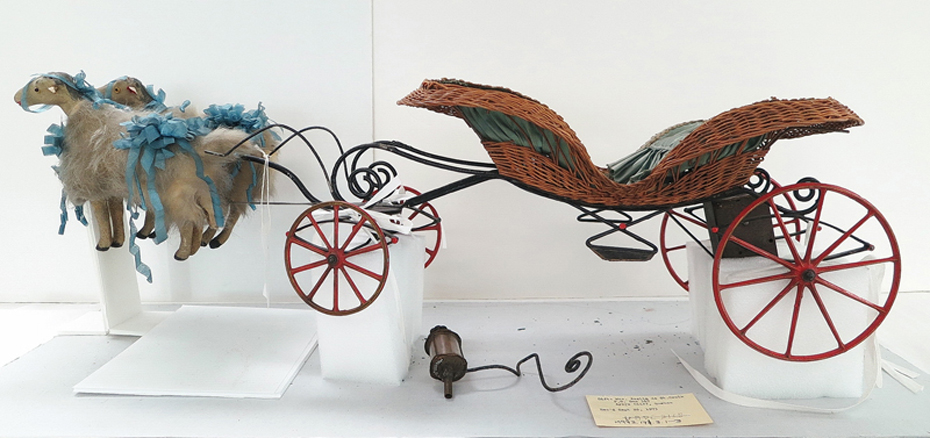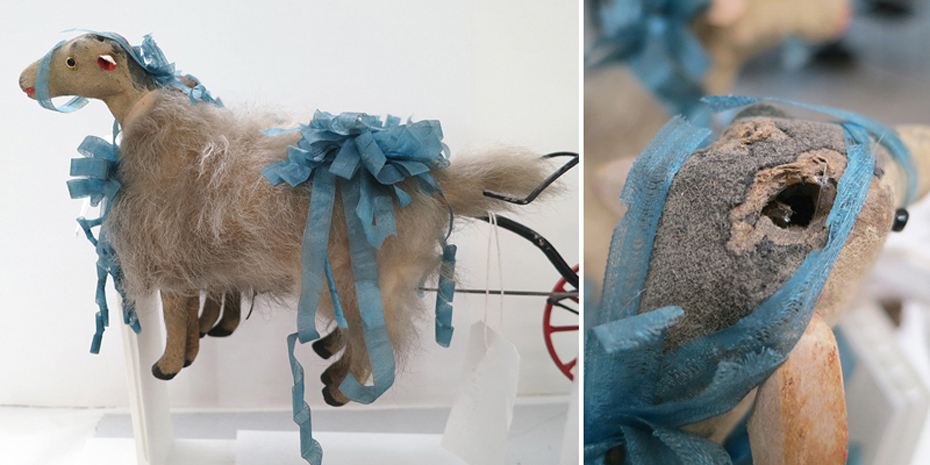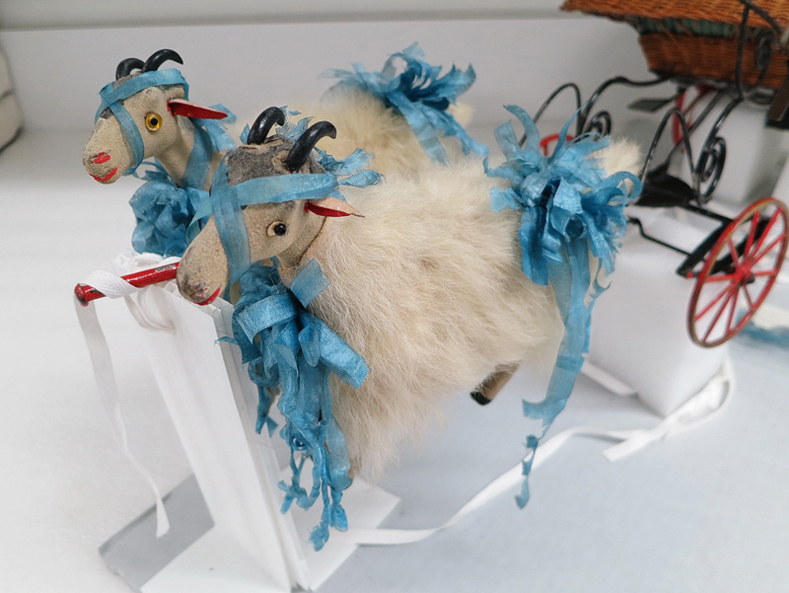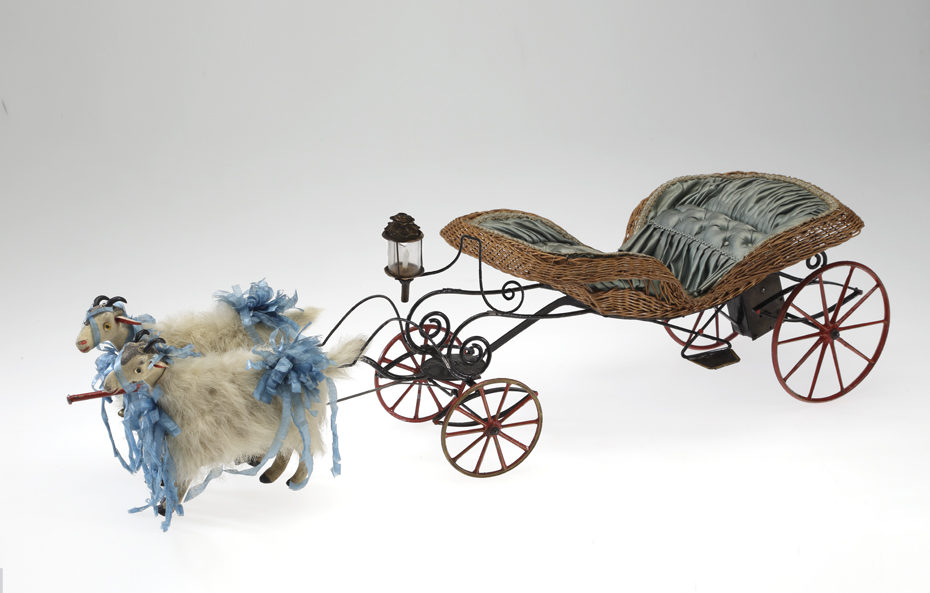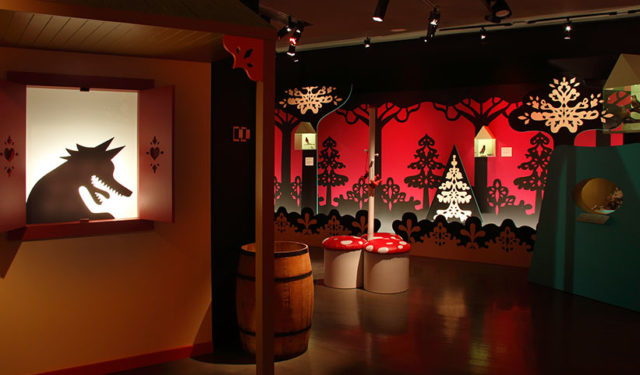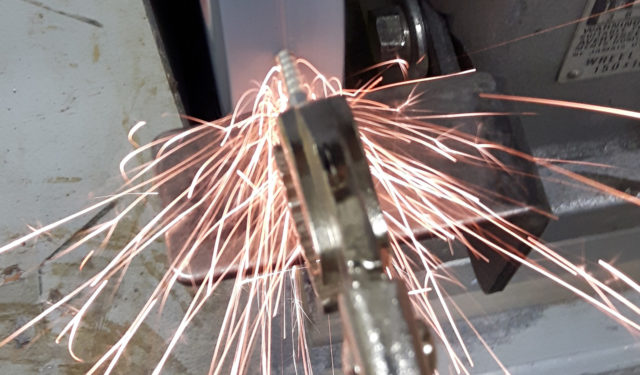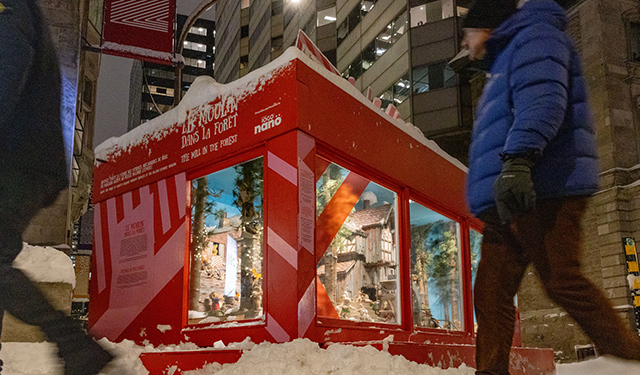A playful conservation treatment
Conservation work can also be fun… especially when one is working with toys!
April 22, 2020
This charming toy may look unusual today, but goat and sheep-drawn carts were actually common modes of transportation for children in the 19th century, when this toy was made. An historic photograph from the McCord’s collection shows a real-life example of children in a goat cart.
Our poor little toy goats were rather dirty, as one would expect after the hard work of carrying their young wards around town, so they underwent conservation treatment before going on display in the exhibition Toys – Mission Cosmos.
They needed a bath—but how do you wash a pair of toy goats?
The goats are made of papier-mâché composition material with fur coverings, which can be damaged if wet with water. Therefore, instead of using soap and water, we cleaned the fur with detergent in Stoddard solvent—a type of mineral spirit used in dry cleaning. The cleaning solution was applied to sections of fur with cotton blotter paper held underneath to absorb the washed-out dirt. Since the solvent is toxic, we did this work inside a fume hood that extracted harmful vapours (in other words, do not try this at home!). The treatment removed the sooty dirt, leaving the fur clean and bright.
The goats also had a couple of holes in their heads—sadly, their horns were broken off and lost. We replaced the missing horns by sculpting new ones from a conservation-grade epoxy putty. The two soft components of the putty are mixed together and sculpted like clay before it cures and hardens to a solid state. The horns were then painted and inserted into the goat heads. The shape of the horns was based on images of similar toys, rather than attempting a scientifically accurate representation of the domesticated goat Capra aegagrus hircus.
Two different adhesives were used to glue things back together on this toy. We joined the fragile, torn silk ribbons back together using strips of fine Japanese tissue paper, toned blue with acrylic paint and adhered in place with low-strength methylcellulose adhesive. A stronger adhesive, a non-yellowing epoxy, glued the detached lantern back onto the metal cart frame, to ensure the lantern stays attached and upright.
Conserving and restoring toys can be particularly enjoyable, because while conservation is rigorous work that combines art and science, sometimes the sculpting, painting, and gluing involved in a treatment does feel like playing.

